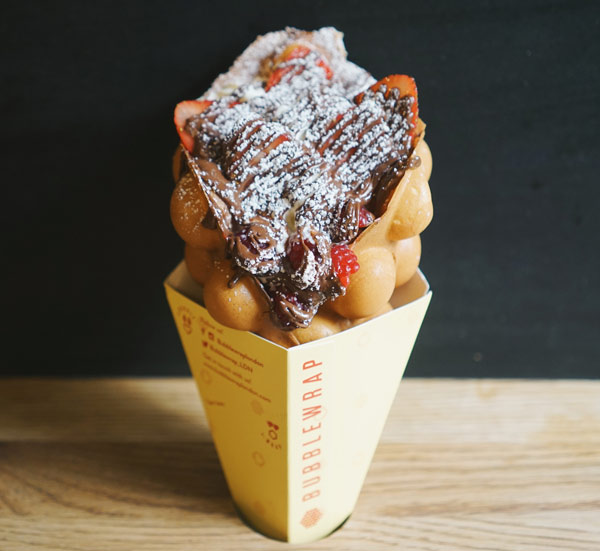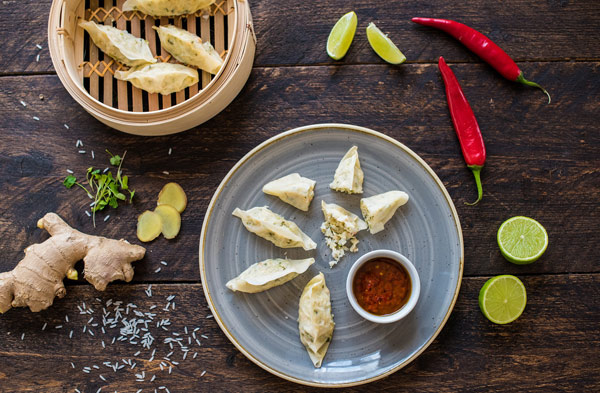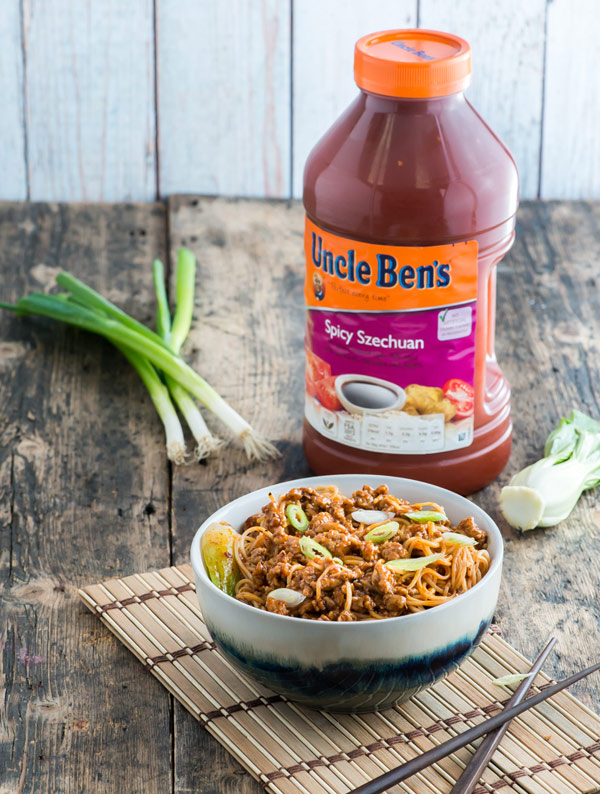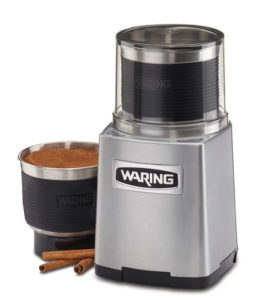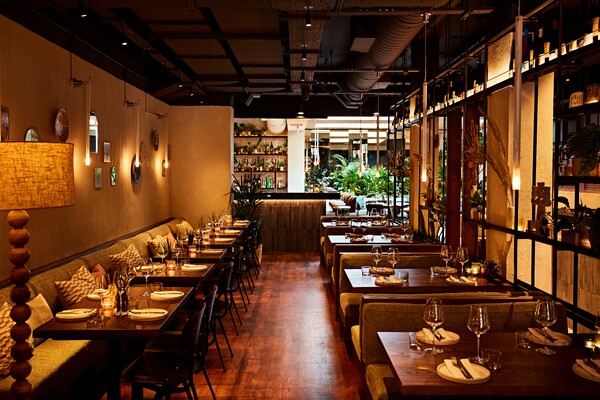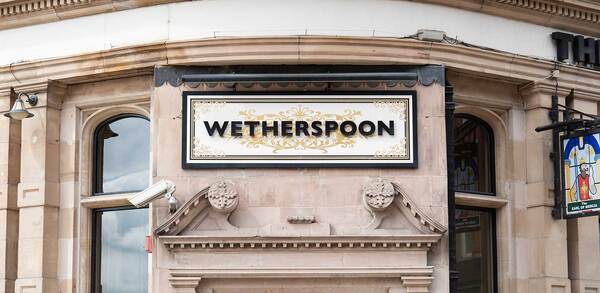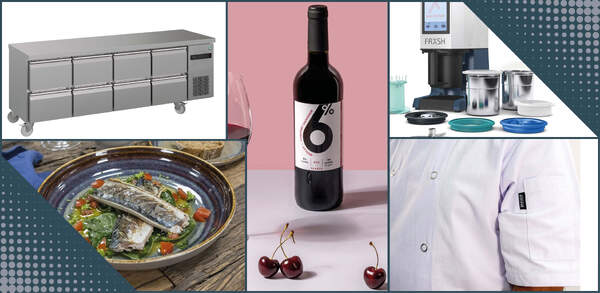That's Chinese New Year all wrapped up
Restaurant operators can use Chinese New Year to their advantage, but it's vital to offer something distinctive. Will Hawkes reports
Itâs incredibly popular. Even in the chill of a December evening thereâs a queue, but in the summer, when Bubblewrap had just opened, there was a line all the way down the street. âIt was really crazy,â says founder and owner Sunny Wu. âWe believe in the product, of course, but we never expected it to be this popular. One of our staff finished work and people were following him asking about the recipe!â
Bubblewrap, whose waffle cones have become ubiquitous on Instagram, is a great example of how âChinese foodâ, as the British know it, is evolving fast. For many years Chinese food meant Cantonese cuisine, often served buffet-style â" and plenty of those restaurants still exist and are succeeding.
But the rise of Sichuan cuisine has been followed by other regionally-focused restaurants, and British customers are finally beginning to get an idea of the true diversity of Chinese cuisine. With the Year of the Dog beginning on Friday 16 February (and the âSpring Festivalâ â" as it is known in China â" lasting for two weeks) the options for celebrating Chinese New Year are greater and more varied than ever.
Lucky food
For Ning Ma, the owner of Mamalan, Chinese New Year is about family and food. She grew up in Beijing, and Mamalan (which has two branches, in Brixton and Clapham) is named for her mother, whose dumplings and noodles form the basis of its menu.
âChina is all about the food anyway, but with the Spring Festival â" when every day you eat food that means something â" thatâs especially so,â she says. âIn China you get time off â" itâs a public holiday â" and itâs the biggest event of the year. Itâs a great chance to catch up with family from far away.â
The most iconic dish of Chinese New Year is dumplings. âItâs something the family will make together,â she says. âItâs a good time to catch up on what everyone has been doing while you cook together. The shape is like a money bag, so itâs a good thing to eat; it means youâll have good fortune in the coming year, and thatâs the number one must-have.â
Dumplings are relatively easy to make, says Ning; you can even buy the pastry in Chinese supermarkets if you donât fancy making it from scratch. âYou can put any sort of stuffing inside you want,â she says. âMinced beef with chopped spring onions, ginger and soy sauce would be a classic choice, but you can use anything. We did an event recently and they wanted a sweet dumpling, a coffee and cream one, and that went down really well.â
Then thereâs fish, another classic Spring Festival dish. The pronunciation of fish in Chinese is similar to that for âplentyâ, says Ning, and thatâs why it is eaten at this time of year. Itâs prepared in a very simple way. âYou can steam it with spring onion and ginger, or black bean sauce,â says Ning. âA lot of supermarkets have decent ingredients now, so you donât have to go out of your way to get them.â
There are other traditional foods, such as noodles, which symbolise longevity in China, or tangyuan, which are glutinous rice balls served in soup. âDifferent regions have different ways of cooking tangyuan and different flavours,â says Ning. âIn Beijing we have them with stuffing inside, either sesame or red bean. You just cook the rice balls in plain water and the flavour comes from the stuffing. In the south, they have their rice balls plain and give the soup the flavour â" sweet ginger soup, for example.â
At Chung Yingâs three traditional Cantonese restaurants in Birmingham, standard menu items will be âjazzed upâ to reflect the festivities. Dishes such as conpoy (dried scallops) or pigsâ trotter and tongue will have fat choy (black moss) added, because âfat choyâ sounds like âprosperityâ in Chinese. âItâs vital to differentiate yourself,â says managing director James Wong, who expects Sunday 18 February to be extremely busy. He adds that new year greetings will be used to name dishes such as âLun ma jin sunâ (the spirit of dragon and horse, signifying alertness and strength), and âKung hei fat choyâ, which means âWishing you prosperity.â
New flavours
Spend just two minutes inside Xu, the new restaurant from the trio behind street-food phenomenon Bao, and itâs enough to realise how quickly Chinatown in London is evolving. This two-level Taiwanese restaurant is decorated in a lavish style, with an emerald tea counter, dark wood panelling, ceiling fans, hand-painted murals and green and pink leather banquettes. Itâs all meant to evoke 1930s Taipei. At the back are two booths called the âMahjong Roomsâ, which are named for the Chinese tile-based game. The boothâs tables even have drawers where the tiles are stored.
Most visitors, though, will be eating rather than playing. The menu offers bak kwa (Taiwanese jerky), lamb sweetbreads and cuttlefish toast. Perhaps the most impressive dish, though, is char sui Iberico pork, a fat, moist, rich red fillet of pork served on sliced courgettes. Itâs delicious.
The signs of Chinatownâs evolution are everywhere on its 14 streets. Plum Valley, a 30-year dim sum veteran, has recently been completely renovated, while Bubblewrap is lining them up around the corner. Then thereâs the group of restaurants run by the Barshu group, which has done so much to popularise Sichuan food in the UK since its first restaurant opened in 2006. Among them is Bai Wei (âa hundred flavoursâ), a cafe-style, two-floor place in Little Newport Street, whose interior is festooned with posters depicting Mao-era workers. The menu â" with dishes ranging from spicy pigâs ear salad to dan dan noodles â" demonstrates that Sichuan cuisineâs reputation for big flavours is not unearned. âOur cuisine is very strong with many different flavours and itâs very hot and numbing,â says Sherrie Looi, manager. âWe use a lot of dried and fresh chillies.â
Itâs a cuisine that is gradually growing in popularity, she says: âBritish customers can take it now, as a lot of our customers have been to China. The first time you eat Sichuan cuisine, you might think âIâm not very sureâ; the second time you think âitâs quite goodâ; and the third time you get addicted!â
Kitchen aids
The value of Chinese New Year to restaurant operators cannot be understated, says Maria Chong, managing director of Lee Kum Kee Europe. âChinese New Year is a big opportunity for foodservice operatives, who should be maximising their sales with creative menu options, fusion flavours and, most importantly, traditional, quality ingredients,â she says.
Thereâs a number of ways to do that, from using Lee Kum Keeâs sauces to Essential Cuisineâs Asian Range stock bases. The range includes the fragrant Aromatic Stock Base, with coriander, lemongrass and star anise; a rich and meaty Master Stock Base, made with garlic and ginger and ideal for marinating meat or fish; and a traditional Miso Broth Base, made with fermented soy.
âThese provide the perfect, authentic base to let a chefâs creativity shine through, and can be spooned directly into sauces, blended with other flavours and ingredients, used as a marinade or poaching liquor, or as a perfect base stock for all manner of Chinese dishes,â says Nigel Crane, managing director.
Then thereâs spice, which can be bought ready-ground from the likes of Schwartz or ground on-site with a Waring spice grinder, available from Nisbets, which can grind hard spices and process up to 1.5 cups of pastes, dressings, butters and sauces at a time.
âWhy not experiment with flavours such as kaffir lime leaf, lemongrass and star anise, using them to flavour traditional Chinese New Year offerings such as spring rolls for wealth, or fish for an increase in prosperity?â says Paul Siouville, Waring brand manager for Nisbets.
Wholesaler Bidfood, meanwhile, has a range of pastes to help operators add flavour to their offering, including laksa paste with turmeric and mild curry flavours, and Korean bulgogi paste with hints of toasted sesame. Tildaâs fragrant jasmine rice can be used in classic Chinese dishes, such as prawn potsticker dumplings, and will be on promotion through February in most wholesalers.
Other options include Wing Yipâs stir-in sauces, Uncle Ben sauces and Huhtamakiâs Eatwell range, which includes Chinese steamed halibut and Oriental sea bass cooked with ginger, garlic and spring onions.
And then thereâs egg waffles, which continue to fly out at Bubblewrap, but expect to see them everywhere soon. âWe are planning to expand â" weâre looking for a second site,â says Sunny. âIt will be a bit different, with more seating and twists on the product.â That probably wonât include a crispy duck option, though.
Suppliers
Bubblewrap bubblewraplondon.com
Mamalan mamalan.co.uk
Xu XUlondon.com
Plum Valley plumvalleyrestaurant.co.uk
Bai Wei chinatown.co.uk/en/restaurant/baiwei
Huhtamaki huhtamaki.com
Nisbets nisbets.co.uk
Mars (Uncle Benâs) unclebens.co.uk
Tilda tilda.com
Wing Yip wingyip.com
Chung Ying chungying.co.uk
Lee Kum Kee uk.lkk.com
Bidfood bidfood.co.uk
Essential Cuisine essentialcuisine.com
Schwartz schwartz.co.uk
Videos from The Caterer archives



